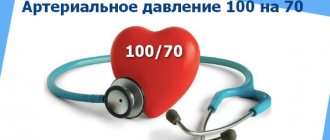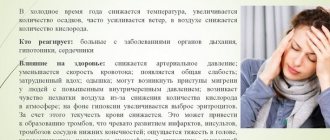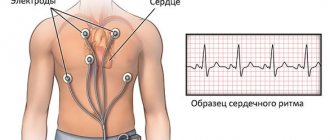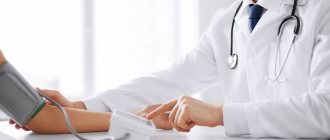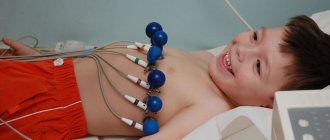Headache is one of the most common types of pain. It can be primary, i.e. not associated with any disease, and secondary, caused by disease or injury.
Headache may be accompanied by weakness, dizziness, increased fatigue, nausea, vomiting, fever, blurred vision, changes in blood pressure, appetite and sleep disturbances, muscle weakness, impaired coordination, speech, irritability, aggression, convulsions, loss of consciousness.
Types of headaches
Tension headache (TTH) is the most common type of headache. Its manifestation is most often associated with a person’s psychological state (stress, depression, anxiety) or physiological stress. TTH can occur due to work stress, lack of sleep, skipping meals, or excessive alcohol consumption. The frequency and duration of attacks (mild and moderate intensity) vary from person to person and can vary from person to person. TTH is characterized by a feeling of pressure in the eyes, bilateral compression in the occipital or frontal area, spreading to the entire head and neck. Typically, a person experiencing an attack of tension-type headache will complain that the head feels like it is being “wrapped in a hoop” or “squeezed in a vice.” Tension headache can be either episodic or chronic (per month, the frequency of attacks exceeds the number of days without headache).
Migraines are characterized by repeated attacks of moderate to high intensity throbbing pain (most often on one side of the head), which can last from 3-4 hours to several days. Most often, a migraine attack occurs spontaneously in the morning (after waking up), sometimes it develops “predictably” (for example, before menstruation or on weekends, after a busy work week). The condition may be accompanied by weakness, nausea, vomiting, sensitivity to light and sound, and pain may increase with movement, coughing, or sneezing. It is believed that migraine is caused by genetic causes, i.e. the predisposition to it is congenital (most people with migraine have close relatives with the same diagnosis). Women suffer from migraines several times more often than men.
Factors that contribute to the occurrence of migraines include: extreme fatigue, lack of sleep or, on the contrary, excessive sleep at night, stress, anxiety, hormonal changes in women (associated with pregnancy, menstruation, menopause), bright lights, flashing lights, loud noises, strong odors, sudden changes in weather or environmental conditions, vigorous exercise, smoking, irregular diet, excess coffee consumption, frequent use of migraine medications, certain foods, especially in combination with other triggers (chocolate, cheese, fruits, nuts, pickled foods, dried meats, sausages, yeast).
There are 4 phases of migraine:
- prodrome - the phase of migraine precursors, may be accompanied by inexplicable mood swings, high cravings for certain foods, euphoria, depression, neck stiffness, drowsiness;
- an aura (before a migraine attack or during its process) may be accompanied by “visual effects” - the appearance of blind spots, bright flashes of light, zigzag lines before the eyes, a person may feel muscle weakness, pay attention to impaired hearing, sensitivity;
- headache phase;
- the final phase - postdrome - lasts several hours (or days, like the prodrome), accompanied by weakness, fatigue, depression, and a feeling of emptiness.
The causes of cluster headaches are not exactly known; it is believed that a certain role in this process is played by the pathological activity of the hypothalamus, which regulates body temperature, blood pressure, the functioning of the endocrine system, as well as a sudden increased production of the immediate mediator of allergic reactions such as histamine or the neurotransmitter serotonin. This type of pain occurs less frequently than the above and is more typical for men. It is usually sudden, intense, unilateral, localized in the eye area, lasts from 30 to 90 minutes or longer, can occur every day (or several times a day) and last up to six weeks or more. This long period, in which cycles of headache attacks are followed by periods without headaches, is called a cluster period. Cluster headaches may be accompanied by watery eyes, red eyes, nasal congestion, and runny nose. It can be provoked by alcohol abuse, physical or psycho-emotional stress, and certain medications. Episodic cluster headaches, which occur regularly, lasting from one week to a year with remissions of at least one month, are more common. Chronic cluster pain occurs less frequently, lasts for one year or more, and remission lasts less than 1 month.
Why does your head hurt with normal blood pressure: 6 reasons
Quite often people experience headaches with normal blood pressure. Doctors presumably identify several main reasons that can lead to problems with brain nutrition:
Prolonged and severe stress , detrimental to all systems in the human body. It provokes an immediate and increased production of the hormone cortisol, which in large and constant quantities causes a gradual decrease in immunity. And anxiety is accompanied by the release of adrenaline into the blood. It causes an increase in blood pressure - hypertension. All this leads to severe tension in the muscles of the shoulders and neck. And this is what causes severe migraines. Therefore, the best recommendation for combating such headaches is exercise and healthy sleep.
Atherosclerosis is the deposition of cholesterol plaques inside blood vessels and capillaries, associated with disturbances in protein and fat metabolism. This problem is very common among all segments of the population, largely due to the fact that the nutrition system is disrupted, even the basic rules of eating are not followed. The best consequence of this disease will be a decrease in the volume of blood and nutrients that support brain function. In the worst case, complete blockage of blood vessels may occur and, as a result, disruption of the entire nutritional system.
Chronic intoxication . It can be caused by many reasons. For example, taking the wrong medications, smoking, narcotic substances, poisoning with pesticides at work. All these factors, in addition to the manifestation of vivid symptoms such as nausea and fever, can also cause spasms of blood vessels, including those responsible for saturating the brain. In the latter case, the volume of nutrients that can pass through the vessel is sharply reduced, which causes headaches.
Diabetes. It provokes many disturbances in the functioning of the body, including problems with metabolism. This can cause the walls of blood vessels to thicken and become brittle, leading to headaches. They are most common among older people.
Getting injured. Any physical injury can also be a likely cause of pain. This is due to the fact that “spoiled” neurocytes are not capable of self-healing and die off, forming tissue scars that are not able to fully transfer nerve impulses.
headaches in women associated with hormonal changes can be classified as a separate category . For example, before and immediately after menstruation, sex hormones are in high concentration in a woman’s blood. This can cause not only sudden changes in mood and fatigue, but also a severe throbbing headache that does not go away even after rest. A similar situation occurs during pregnancy.
cefalea.ru
Causes of secondary headaches
Causes of secondary headaches (associated with illness or injury) include:
- arterial hypertension;
- cerebrovascular diseases (ischemic stroke, hemorrhagic stroke, cerebral aneurysm);
- infectious diseases (meningitis, encephalitis, otitis media, sinusitis);
- hydrocephalus;
- idiopathic intracranial hypertension;
- head injuries;
- uncontrolled (excessive) use of medications;
- benign and malignant brain tumors.
What is a hypertensive crisis?
A hypertensive crisis is an episode of sudden increase in blood pressure, which is accompanied by additional symptoms and can lead to target organ damage. This is an emergency condition that requires immediate reduction of blood pressure to prevent complications.
Causes of uncomplicated crises:
- violation of the regimen of taking antihypertensive drugs;
- stress, anxiety;
- physical or psycho-emotional fatigue.
In itself, an increase in blood pressure, if it is not complicated by anything, although unpleasant, does not cause long-term negative consequences, because it lasts only a short period of time. However, the risk of severe complications increases significantly. Therefore, blood pressure needs to be reduced as quickly as possible. The maximum risk of target organ damage is observed when systolic blood pressure is above 180 mmHg. Art., diastolic – 120 mm Hg. Art.
When should you see a doctor for a headache?
You should consult a doctor if headache attacks occur three or more times a week; painkillers do not relieve the condition; headache is severe, occurs during physical activity, bending, coughing; the intensity of the headache increases; headache occurred after a head injury or fall.
Get medical help right away if you experience any of the following: sudden, intense, severe headache; for headaches accompanied by neurological symptoms - weakness, dizziness, sudden loss of balance, loss of gait stability, tingling sensation, burning sensation on the skin, weakening or lack of sensitivity in an area of the body, disorientation, tremor, speech or vision disturbances, convulsions, loss of consciousness; for headaches accompanied by fever, shortness of breath, neck stiffness, rash, severe nausea or vomiting; the appearance of unusual headaches after the age of 55 years.
Treatment
Some patients with tension headaches do not see a doctor and try to treat the pain on their own. Unfortunately, repeated self-use of painkillers can itself cause severe headaches.
Drug treatment
There are a wide variety of medications, including over-the-counter ones, that can help relieve pain, including:
- Painkillers. Simple over-the-counter pain relievers are usually the first line of treatment for headaches. These include aspirin, ibuprofen (Advil, Motrin IB, others), and naproxen (Aleve). Prescription medications include naproxen (Naprosyn), indomethacin (Indocin), and ketorolac (ketorolac tromethamine).
- Combined drugs. Aspirin or acetaminophen or both, often combined with caffeine or a sedative in one medicine. Combination medications may be more effective than medications with a single active ingredient.
- Triptans and drugs. For people who have both migraines and tension-type headaches, triptans can provide effective headache relief. Opiates, or narcotics, are rarely used due to their side effects and high risk of addiction.
What pills are best to take if you rarely get headaches?
Any painkillers
will one way or another have pathological consequences. The active ingredient diclofenac affects the stomach, meloxicam - the liver, ibuprofen - the cardiovascular system. Everything has a side effect, but if you take anti-inflammatory pills rarely, nothing bad will happen.
combination drugs :
they include not only the anti-inflammatory substance itself, but also caffeine, phenylephrine, antispasmodics... Such drugs work more complexly and it is better not to use them without the supervision of a doctor. Otherwise, situations arise when a patient without migraine takes pills for migraine, receiving a side effect from them.
Uncontrolled reception
drugs can lead to abusive headaches.
They occur when you take excessive amounts of anti-inflammatory pills. Let’s say you take pills every day according to the scheme “I have a headache - I took a pill - the pain went away - the next day it hurts again - I took a pill”... As a result, your head starts to hurt simply because you need to take an anti-inflammatory drug again. This situation requires treatment
with a specialist.
What to do?
If your blood pressure has increased, a headache or other accompanying symptoms have appeared, it is highly likely that this is a hypertensive crisis. The sequence of actions should be as follows:
- Relief of crisis and normalization of blood pressure.
- Finding out the cause of the crisis.
- Taking measures to prevent crises, because each of them can result in acute coronary syndrome, cerebral hemorrhage, aortic dissection or other serious complication, the number of which is in the dozens.
All of the above should be done by the doctor, not the patient. At the first stage, the doctor stops the attack. The rate of decrease in blood pressure should not exceed 25% in 2 hours. Target blood pressure should be achieved no earlier than a day or two after the crisis. This effect is achieved by a combination of fast-acting drugs and long-acting drugs.
The doctor’s further task is to find out the cause of the crisis and eliminate it. The patient requires ongoing antihypertensive therapy if his blood pressure is higher than normal.


